

Black Electronic Underground

Cheryl Mainor Norman CEO & Publisher
Kai EL’ Zabar
Editor-In-Chief
Terri Winston Vice President
Laura Miller Managing Editor
Darnell Pulphus Art Director
Max Blaisdell Copy Editor
Dr. Mila K. Marshall Cannabis Corner Editor
Kennedy Lynn Editor Assistant
Staff Writers
CL Blackburn
Zada Johnson
Marti Worell
Wanda Wright
Shanell Oliver
Jamika Young
Columnists
Dr. Sanja Rickette Stinson
Contributors
NNPA Newswire
Mare Evans
Melanie Mainor
Ken Hare
Shanell Oliver
Cover Photos
Darnell Pulphus
Advertising Representation
Chicago Media Partners
Michael Tolliver (708)268-5518
Chicago News Weekly 2150 S. Canalport Ave. Suite 4-C14
Chicago, IL 60608
312. 877. 5151 Vol. 2 No 28 Wednesday, September 11, 2024
Chicago News Weekly is published weekly on Wednesday. www.cnwmedia.com advertising@cnwmedia.com editorial@cnwmedia.com
Subscription $104 year

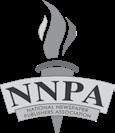
E notes
Everybody’s Talkin’
We’re living in a time where it feels increasingly difficult to hold a meaningful conversation.
While we may not agree on many things, most people can likely agree that we’ve stopped having real conversations. It’s evident in today’s social-political climate— how we treat and talk to others with opposing views is fractured. Whoosh! Just like that, people shut down the moment they realize they disagree with whatever you’re talking about—be it politics, sports, entertainment, religion, or LGBTQ matters. Mention one of these hot topics, and the conversation quickly devolves. If anyone had any composure, it flies out the window. Some are even ready to get physical.
What’s happened to us? Why are we so polarized that we can’t listen to others who have different opinions? It creates a hostile environment. People shut down when their perspective isn’t validated. We all have the right to view things differently, based on our experiences, and conclude what is right or wrong for us, our families, or our communities. Appreciating one another’s distinct viewpoints is critical to understanding why someone might see the same issue in a completely different light.
I think people stopped listening to each other and instead treat everything like a competition—like they do with their social media presence. It’s the age of selfies: “I, my, me, mine—see me!” And then there’s you, but only if you contribute to my likes or followers. Otherwise, you don’t count, because it’s all about me.
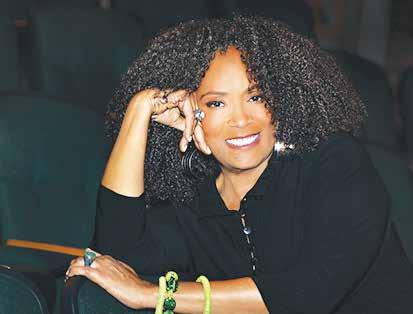
Have you ever started a conversation with, “Hello, how are you?” and the response was more about the other person than any real interest in you? Something like, “Yeah, man, I’m pushing the numbers, gonna hit that million soon, then I’ll really start breaking the bank.” That’s a total disconnect.
In a 2021 poll, Americans identified “other people in America” as the biggest threat to our way of life. By June of that year, U.S. voters ranked "division in the country" as the number one issue facing them personally. Wow, right? When did that happen? Regardless of whether we were conservative, liberal, or somewhere in between, we once prided ourselves on respecting our differences, at least outwardly. Now, we can’t even have a sensible conversation. The decency of civil discourse seems lost. Is it the result of this tech-heavy era, where texting replaces real conversation to avoid the emotion of live dialogue? Are we afraid of passion—of raised voices and gestures?
There’s so much to consider. People’s attention spans seem shorter. While one person speaks, the other is likely checking texts, not really listening. They may catch one word, then stop listening altogether, ready to argue because that one word turned them off. I recall a time when I said something, and the person I was speaking to got upset and began ranting about something completely unrelated to what I was discussing. It reminded me of the movie "Midnight Cowboy," and the song, “Everybody's Talkin’”—"Everybody's talkin’ at me, I don’t hear a word they’re sayin’, Only the echoes of my mind…” Seriously, people are talking at each other, not to each other. It’s like a wait-
ing game, where everyone’s just holding out for their turn to speak, often about things irrelevant to the conversation at hand.
What I know to be true is that it takes at least two to engage in meaningful dialogue. Participants must be intentional about listening, preparing to interact thoughtfully. Getting hung up on catchphrases that are empty and irrelevant to the real point is counterproductive. The goal should be to actively contribute to the conversation with the intention of advancing it.
If you have a hidden agenda, that’s another story. But if you genuinely want to hear what the other person has to say, you might walk away more informed, or at least with a better understanding of why, for example, your mentor voted for the other candidate. Now, more than ever, it’s essential to understand why people feel the way they do about significant issues. It can lead to empathy and compassion for others' circumstances. You can also demonstrate true acceptance of someone whose life experiences differ from your own. What’s important or significant to you may not be the same for them. That’s okay. They see life through a different lens, with different filters than yours. And we can walk away knowing that we have different needs and justifications. They vote as they choose, and so do you or I. And that’s that! I like red, they love blue. We both like golf. I love the water, they love the snow. You dig? We’re all different. And that’s just how it is.
Kai EL’ Zabar Editor-in-Chief
photo credit: Dot Ward

UNCF Recognized by The Chicago Cubs
The Chicago Cubs are proud supporters of UNCF (United Negro College Fund), the nation’s largest scholarship provider to under-served and minority students. Before the recent Cubs vs. Washington Nationals game, the Cubs presented a check for $30,000 to UNCF. Vice President Mid-Atlantic and Midwest Divisions Fred Mitchell and Regional Development Director Lisa Rollins accepted the donation.
Chicago NORML celebrates 7th Anniversary at Penthouse Hyde Park around town


Chicago NORML
celebrated its seventh anniversary at the Penthouse Hyde Park, highlighting its commitment to cannabis reform and equity. Founder Edie Moore emphasized the mission’s focus on justice and sustainable pathways for social equity businesses. The organization continues to advocate for legislation prioritizing medical patients as it looks toward a more equitable cannabis landscape.
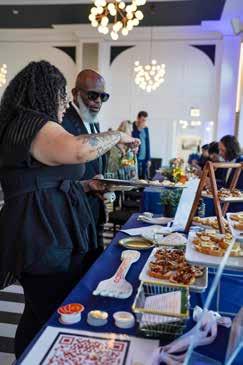

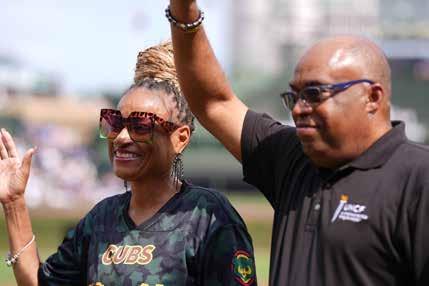


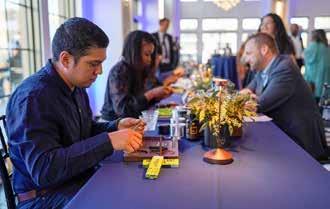
Former Ald. Ed Burke Surrenders to Begin Sentence
Edward M. Burke, the former 14th Ward alderman and the longest-serving member of the Chicago City Council, has surrendered to federal prison to begin a two-year sentence for racketeering, bribery, and attempted extortion. Burke, 80, reported to a low-security facility in Thomson, Illinois, marking a significant moment in Chicago politics. Known as a political heavyweight in the city, many speculated that he might delay his sentence with appeals, but no such legal maneuvers followed his conviction by a jury in December.
Burke's downfall reflects the ongoing struggle against corruption in Chicago's political landscape, where he wielded significant influence for decades. His sentencing and incarceration come after a long career marked by both power and controversy.
The Thomson facility, located about 150 miles west of Chicago near the Iowa border, became Burke’s assigned prison despite Chief U.S. District Judge Virginia Kendall’s recommendation that he serve his time in Terre Haute, Indiana. The Bureau of Prisons was not bound by that suggestion.
Burke's two-year sentence, though significant, is notably less than what prosecutors sought during his trial. Several other public officials convicted of corruption have faced harsher penalties in recent years, underscoring ongoing legal efforts to combat political corruption in Chicago and Illinois.
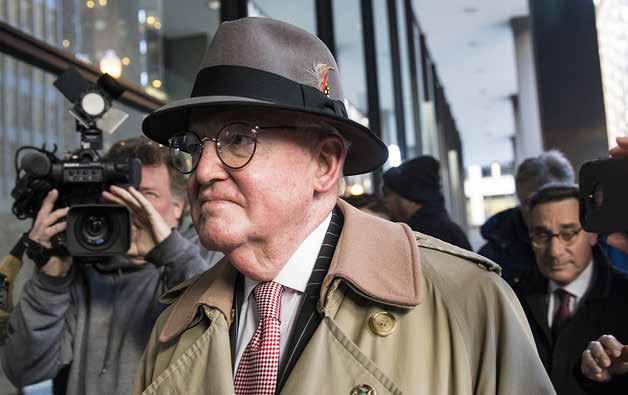
Beauty Pros Gain Inspiration and Insight at Beauty Gives Back
Salon professionals looking to deepen their motivation, business acumen, and next-level mindset gathered at the Beauty Gives Back event today at the Oak Brook Hills Resort in Oak Brook, Illinois. This dynamic event united beauty industry leaders, esteemed artists, and innovative brands to support professionals at every stage of their careers. The day featured inspiring discussions and networking opportunities aimed at empowering beauty professionals.

TOP - Julie Hightower, Founding Board Member of the Daisie Foundation & Mireya Villarreal, founder of the Pink Pewter Foundation presenters of Beauty Gives Back with DeVante Talley, receipt of scholarship from Larry’s Barber College and Larry Roberts, Jr. owner and founder of Larry’s Barber College Bottom - Beaty Gives Back Selfie
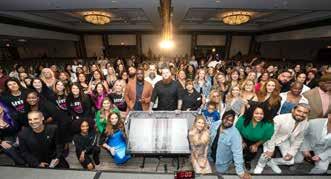
Panelists from across the beauty industry shared their journeys, offering insights into both their successes and challenges. This groundbreaking movement fosters development, networking, and connections among attendees, enabling them to access the tools, guidance, and inspiration needed to thrive in their careers. Beauty Gives Back emphasizes the importance of community support and mentorship for aspiring beauty professionals.
Presented by the Daisie
Foundation and Pink Pewter Foundation, the Beauty Gives Back event allocated proceeds to grants and scholarships for emerging beauty professionals. A notable highlight was the awarding of two full barber scholarships, each valued at $19,740, for tuition at Larry's Barber College. De'Vonte Talley received one of the scholarships from Larry Roberts, Jr., while Marshawn Armfield, who was unable to attend, was also recognized for his achievements.
Throughout the event, 30 scholarships and grants were distributed by organizations including Tricoci University, Marlo Beauty Supply, Shades by Shan, America's Beauty Show, and Beauty Gives Back. This remarkable initiative has awarded more than $100,000 in grants and scholarships in just two years, showcasing the philanthropic spirit of the beauty community. The event stands as a testament to the collective effort to uplift the next generation of beauty professionals.
Save the date for September 14, 2025, to attend this thoughtful and informative event next year.
Chicago Football Classic Celebrates 26 Years of Black Excellence in Education
Kennedy Lynn CNW Contributor
The Chicago Football Classic is more than just a football game. For 26 years, it has been a celebration of the legacy, pride, and tradition of Historically Black Colleges and Universities (HBCUs). In addition to the electrifying game the Football Classic hosts each year, they also put on the HBCU College and Career Fair. This event allows teens to explore various scholarships, showcases different colleges
and universities, and highlights a multitude of career options available after college.
Fans from across the country gather for this annual event to support not only their teams but also the broader mission of HBCU education and empowerment. The game, held at Soldier Field, provides the perfect stage for the athletes to shine in front of a passionate crowd.
The 2024 Chicago Football Classic typ-
ically draws a distinguished list of dignitaries, public figures, and community leaders who attend to celebrate both the football game and the rich traditions of HBCUs. Some of these dignitaries included Cook County Board President Toni Preckwinkle, Chicago Mayor Brandon Johnson, Kentucky Governor Andy Beshear, Divine 9 2024 Grand Marshal Speaker Emanuel “Chris” Welch, and 2024 Grand Marshal Reverend Jesse
Louis Jackson, Sr.
In an exciting contest at the 26th Annual Chicago Football Classic, Morehouse pulled off a thrilling 31-28 victory over Kentucky State, thanks to a last-second touchdown at Soldier Field. The game showcased an intense back-and-forth battle, with Morehouse emerging victorious in dramatic fashion.
Christi Love Guest Writer

Black Electronic Underground
The Beat That Never Stops In Chicago’s Black ElectronicUnderground Movement
Laura Miller Managing Editor
Under the dim, pulsating lights of a crowded Chicago warehouse, the energy is electric. The room throbs with the beat of techno and house, as bodies sway in unison, their movements synchronized with every bass drop. At the helm of this sonic wave stand two DJs, FUJ and Shaun LaCosta Sinclair, orchestrating the night like masters of a symphony. The Black Electronic scene in Chicago is alive, and its torchbearers are reshaping its narrative, one underground rave at a time.
I sat down with Fuj and Sinclair to learn more about their journey—not just as DJs, but as cultural pioneers. Their partnership is more than just beats and turntables; they are pushing boundaries in a genre where

Chicago: The Birthplace of House Music and the Underground Scene
Cover Story
Black voices have been historically underrepresented, reclaiming space in the heart of Chicago’s underground music scene. Their story is as layered as the beats they spin, blending personal history, cultural pride, and a love for electronic music that transcends race and genre.
A Journey Through Sound: From Childhood to House Beats
Fuj’s path into music began in his grandfather’s living room. "I was dressed as Michael Jackson, doing the whole routine in front of the family," he laughs, the memory still vivid. Even as a toddler, he was already in love with music, channeling the King of Pop with wide-eyed enthusiasm. His first real musical endeavor came through trumpet lessons in elementary school. Sports soon took over, but the music never left his heart. Years later, it would be electronic music that drew him back into the creative fold.
"It wasn’t until 2013, after I moved back to Chicago from Atlanta, that I started getting into electronic music," Fuj shares. At first, he was more drawn to hip-hop and punk, but house music—Chicago’s very own sonic invention—soon called to him. "There's something about electronic music. It was the combination of the atmosphere and the sound. The lights, the freedom, it was something new to me."
Chicago: The Birthplace of House Music and the Underground Scene
To understand the significance of Fuj and Sinclair's work, it’s important to recognize the deep history of house music in Chicago. Emerging from the ashes of disco in the late 1970s, house music was born in the city’s underground clubs, a response to the exclusion Black and Latino communities often faced in mainstream music spaces. The legendary Warehouse club, where DJ Frankie Knuckles held court, became the epicenter of this movement. It was here that Knuckles, dubbed the "Godfather of House," mixed soul, R&B, and disco with the electronic rhythms that would later define house music.
"House music is Chicago's gift to the world," Fuj says proudly. "But what’s crazy is how disconnected people feel from that history." What started as an
underground movement has now gone global, influencing everything from EDM festivals to pop music. Yet, many Black artists and fans still find themselves on the margins of a genre they helped create.
Electronic Dance Music (EDM), a broader term that encompasses genres like house, techno, and dubstep, evolved from house and techno’s roots. While the mainstream scene became synonymous with massive festivals like Tomorrowland and Electric Daisy Carnival, dominated by white audiences and DJs, the underground Black EDM scene is a vibrant, thriving community, especially in cities like Chicago, Detroit, and L.A. Afrocentric Vibes: Reclaiming Space in a White-Dominated Genre Fuj and Sinclair aren’t just DJs—they’re cultural curators. One of their proudest projects is Legion of Doom, a series of underground events designed exclusively for Black DJs and audiences. Hosted in venues like The Empty Bottle and other hidden gems around the city, these parties offer a safe space for Black artists to explore and perform their own take on electronic music.
"At Legion of Doom, it was all Black DJs, all Black attendees," Fuj explains. "Some people felt excluded, sure, but most were cool with it. For us, it was about creating a space where we could be ourselves."
It’s a critical statement in a scene where minority voices are often drowned out. While the EDM industry at large is still predominantly white, Black artists are quietly reshaping the culture from the underground up. Fuj nods to cities like Detroit—where techno originated—as another key player in the resurgence of Black electronic music. “You see it happening in L.A. too,” he says. “Young Black men and women are getting into the scene in ways they didn’t before, and that’s something we’re really proud to be a part of.”
Music, Culture, and Community: The Essence of Black EDM
For Fuj and Sinclair, DJing is about more than spinning records—it’s about community. “It’s not just the music, it’s the people,” Fuj says. “Electronic music



brings people together, and in a space like ours, where you don’t see a lot of people who look like us, it’s even more important to build that sense of community.”
Their DJ sets are more than just performances; they’re experiences. The pair regularly hosts underground parties that blend the experimental edge of EDM with the soulful roots of house. The aesthetics of these events are as diverse as the music. “You’ve got people in Mad Max-style ripped clothes, others in glitter-covered outfits, and then those who look like they just stepped out of a Berlin rave,” Fuj describes, painting a vivid picture of the crowd. “It’s all about freedom of expression. The music moves people in a way that nothing else can.”
Sinclair, who brings a more house-centric vibe to their sets, sees the craft of DJing as a way to connect with both the audience and his own creativity. "We’re not about the mainstream, plug-and-play style of DJing," Sinclair notes. "We like to keep it authentic. Vinyl, digital, whatever—we want to preserve the craft."
From the Crate to the Dance Floor
Fuj and Sinclair are both crate diggers at heart, always searching for that perfect beat. “I’ll spend weeks digging for records before a big show,” Fuj admits. “It’s all about finding the right sound.” Their sets are a blend of house, techno, and electro, with each DJ bringing their own flavor to the mix. "Shaun LaCosta Sinclair leans more toward house and electro," Fuj explains, "but I’m more into techno. Together, we create something that’s bigger than just one genre."
But it’s not just about what records they spin—it’s about how those records make people feel. “When you’re DJing, you’re controlling the energy in the room,” Fuj says. “A single turn of a knob can change the whole vibe.” For them, the real joy comes from watching a crowd of people move in unison, completely lost in the music.
The Future of Black EDM in Chicago
So what does the future hold for Fuj, Sinclair, and the Black EDM scene in Chicago? "We’re just getting started," Fuj says with a smile. "There’s so much more we want to do—more parties, more music, more ways to get people involved." They’re working on new music and planning even bigger events, but for them, it’s all about staying true to their roots. "We’re not trying to blow up and become mainstream," Sinclair adds. "We just want to keep making good music and create spaces for people to enjoy it."
The underground scene in Chicago is on the rise, with more Black DJs and producers stepping into the spotlight. Fuj and Sinclair see themselves as part of a larger movement, one that’s about reclaiming and reshaping electronic music for the next generation.
House Music’s Legacy Lives On
As we wrap up, I ask Fuj what he hopes people will take away from their story. “I want people to realize that this music is for everyone,” he says. “House music, techno—these are Black art forms. And we’re still here, still making music, still pushing the boundaries.”
House music was born in Chicago, but its influence has spread across the globe. Yet, as the genre continues to evolve, its origins are often forgotten. For Fuj and Sinclair, their mission is to remind the world where it all started—and to make sure Black artists stay at the center of that narrative.
Are you ready to dance?
The beat won’t stop anytime soon, and neither will Chicago’s Black EDM revolution. Come for the music, stay for the culture, and leave knowing you’ve witnessed something that’s bigger than just a night out—it’s history in the making.

Get More for Your Social Security Eight States to Move to If You Don’t Want To Pay Taxes on Social Security

States are as different as you and I, each possessing unique characteristics that make them either attractive or unattractive. Many of us love the cities where we’ve lived and worked, but as we face retirement, things take on a different perspective. We begin to question the value of our dollar. How far will it go? What you need to know is that each state handles Social Security differently—not all states tax equally.
It might surprise you to learn that some states impose a tax on the money you withdraw from Social Security. Crazy, right? It seems unfair that after putting in the time and having deductions taken from your paycheck for Social Security, your savings might be a little less than you expected.
Fortunately, if you’re looking for relief, you can move to Washington, D.C., or one of the 39 states that don’t tax Social Security: Alabama, Alaska, Arizona, Arkansas, California, Colorado, Delaware, Florida, Georgia, Hawaii, Idaho, Illinois, Indiana, Iowa, Kentucky, Louisiana, Maine, Maryland, Massachusetts, Michigan, Mississippi, Nevada, New Hampshire, New Jersey, New York, North Carolina, North Dakota, Ohio, Oklahoma,
Oregon, Pennsylvania, South Carolina, South Dakota, Tennessee, Texas, Virginia, Washington, Wisconsin, and Wyoming. (Note: Colorado does tax Social Security for recipients under age 65.)
If you’re wondering which states are best for retirees, GOBankingRates looked into which states have the lowest taxes. If you’re retiring soon, check out the best states to get more bang for your Social Security buck. Below is a list based on their tax structure.
Alaska
State sales and average local tax: 1.76%
State tax on Social Security: None
Effective property tax: 1.04%
Income tax rate (65+): 0%
It’s no surprise that Alaska is the most tax-friendly state for retirees because it has no state income tax or tax on Social Security. However, Alaska ranks as the 6th highest state for cost of living, so what you save in taxes, you may end up spending on housing.
Wyoming
State sales and average local tax: 5.36%
State tax on Social Security: None
Effective property tax: 0.56%
Income tax rate (65+): 0%
Wyoming is also a great choice for retirees since it doesn’t tax Social Security or have an income tax. It also has lower property taxes than Alaska, but unlike Alaska, Wyoming has a 4% sales tax.
Delaware
State sales and average local tax: 0%
State tax on Social Security: None
Effective property tax: 0.61%
Income tax rate (65+): Graduated from 2.2% to 6.6%
While not a total home run, Delaware offers a significant advantage: it doesn’t impose a state or local sales tax. However, there is a graduated income tax that could impact your earnings.
New Hampshire
State sales and average local tax: 0%
State tax on Social Security: None
Effective property tax: 1.93%
Income tax rate (65+): 4% (applies only to interest and dividends income)
Surprisingly, New Hampshire is one of the best places for retirees seeking to avoid taxes. The state has no sales tax, no state income tax (except for a flat 4% on interest and dividends), and no tax on Social Security. However, property tax-
es are quite high, so if you buy a home here, expect to pay a good deal to Uncle Sam.
Nevada
State sales and average local tax: 8.23%
State tax on Social Security: None
Effective property tax: 0.59%
Income tax rate (65+): 0%
In addition to not taxing Social Security, Nevada also doesn’t have an income tax. However, you’ll still pay property taxes, and Nevada’s sales tax is relatively high compared to other states.
Florida
State sales and average local tax: 7.002%
State tax on Social Security: None
Effective property tax: 0.91%
Income tax rate (65+): 0%
Ever wondered why so many retirees flock to Florida? There are no taxes on income or Social Security benefits. Property taxes are average compared to the rest of the country, and the sales tax rate is fairly low in comparison to other states.
South Dakota
State sales and average local tax: 6.40% State tax on Social Security: None Effective property tax: 1.17%
Income tax rate (65+): 0%
South Dakota is another state without an income tax, so retirees won’t need to worry about their Social Security benefits being taxed. However, the property tax in South Dakota is higher than the national average of 0.99%.
North Dakota
State sales and average local tax: 6.97% State tax on Social Security: None
Effective property tax: 0.98%
Income tax rate (65+): 1.10%
Though North Dakota doesn’t tax Social Security, it does tax income from retirement accounts, such as a 401(k) or IRA. How much you pay depends on your income, but the tax rate is still relatively low.
Laura Miller Managing Editor
Embracing Life’s Chapters: A Fourth Quarter Reflection
As we approach the final quarter of the year, I want to share some thoughts. Before you tell me how hard you’ve worked on your goals, hear me out. Of course, it's important to envision and implement your plans, but lately, I’ve been questioning the rigidity of how we map out our lives.
Think of it like writing a book. The easiest way to finish a book is to organize your ideas by chapters. If you get stuck, you can look at your outline and say, "I may be unsure about Chapter 5 right now, but I’ve got clear ideas for Chapter 8." That’s because you’ve already written brief synopses for each chapter, so you know what happens next.
Life isn’t all that different. There are phases of excitement and growth, but also times when we feel stuck. The prob-
lem is, that when we get stuck in life, we tend to fixate on it instead of moving forward in the areas where we have clarity.
Rumi once said, “When you do things from your soul, you feel a river moving in you, a joy.” Even when life feels stagnant, there are areas within us that can flow freely if we allow them.
For example, if you’re reading this and struggling financially, focusing on being a better friend might seem difficult. But the truth is, two things can happen at once. You can deal with financial challenges and still show up for the people who need you. Why? Because in life, we are always more than one thing.
Outlines for our lives can weigh us down—especially when you factor in daily pressures, social media, and environmental distractions. But here’s the thing: we have to embrace the duality of life. “You may not control all the events that happen to you, but you can decide
We Care FORChicago
We are 90,000 home care, child care, nursing home and hospital workers in Chicago and beyond.
Joined together through our union, we care for your families to ensure your loved ones can maintain their independence, provide for their children, and get the quality healthcare they need to heal and thrive.
When we fight for and invest in care and care jobs, we all benefit from healthier communities and a healthier, thriving Chicago.

not to be reduced by them,” Maya Angelou reminds us. You can struggle and still love, you can feel stuck and still move forward, you can experience sadness and still seek help. All these things can happen at the same time. As we close out the year, I want us to

reassess our expectations with fresh eyes. Be vulnerable with yourself, and be intentional about how you treat yourself. If the path you’ve been on—whether it’s one you’ve chosen or one that was chosen for you —is no longer serving you, don’t hesitate to throw it away.



Living Chicago
Mila K. Marshall, Ph.D. Staff Writer
Fall Fun for Families in Urban Forests and More
If summer was too muggy and buggy for you, the cooler temperatures and refreshing breezes of fall make for a welcoming weekend and magical early mornings outdoors. Now’s the perfect time to ease into your cozy layers and explore the city in new ways. The changing sea-
for all budget types to consider. Practice supporting conservation while making memories with the people you love this fall.
Treetop Adventure
Distance: Approx. 30 min drive
Average cost: $50+
Website: www.goape.com

sons offer a great opportunity to start new traditions. While families gather for football Sundays or prepare for the holidays, nature play, volunteering, and exploring new places around the city can be a fantastic way to connect and enjoy each other’s company. Always remember to be prepared for the outdoors. When coordinating with friends and family who may be new to outdoor activities, make sure everyone has the appropriate apparel and enough water for the outing. Cooler temperatures don’t mean you can’t risk dehydration. If you're going out with elders or members with disabilities, plan an experience that everyone can enjoy together, and make sure you know where the bathrooms are and check the conditions of the site, especially if there’s been recent heavy rain. It never hurts to be prepared for outdoor experiences. Nature is all around us, and adventures can also be cost-effective. Here are some recommendations
Duration: Day trip - multi-night stay Shabbona Woods is just off 159th Street, south of the Bishop Ford. Urban camping doesn’t get any easier! Grab your tent or opt to rent one of their three-season cabins adjacent to Sand Ridge Nature Center, where you can hike through an oak woodland and wetlands. The site is fully ADA accessible, with showers, and is dog-friendly for pet parents. Campgrounds are open 24 hours a day for registered campers. Non-profits, veterans, and veteran organizations qualify for a 50% discount for cabin and bunkhouse reservations Sunday through Thursday. Discounts are also available for tent and RV non-electric fees, which can be booked in person at the campsite or by calling 855-YES-CAMP (855-937-2267) for reduced rates.
Hike Indian Ridge Marsh
Distance: Approx. 30 min drive
Average cost: FREE Website: www.chicagoparkdistrict.com
Location: 11740 S Torrence Ave, Chicago, IL 60617
Duration: Dawn till dusk
Up for a sunrise stroll through an urban savannah? Indian Ridge
Marsh is close to home and free to explore. This 150-acre natural area in the Calumet region is home to wetland birds and stunning flowers. Wetlands are important ecosystems that soak up water, release it slowly back into the aquifer, and filter it to make it cleaner. The soft trail can get a little muddy, so wear appropriate shoes and be sure to bring binoculars. Unlike the campgrounds at Shabbona Woods, pets are not allowed at Indian Ridge Marsh. Domestic animals like cats and dogs are predators, so to protect the local wildlife, it’s essential to leave them at home.
Stay on all marked trails! Don’t wander off into natural areas, as there may be ongoing restoration efforts and ground-nesting birds. Lock your bike and take a hike—this trail is not for cyclists, skating, or skateboards. And while you may be tempted to fish, remember it’s only allowed in designated areas. Visit the Chicago Park District to confirm where you can cast a line. Lastly, and most importantly, leave no trace. Dispose of all garbage properly and leave the path just as lovely for the next person to enjoy. Looking for a family volunteer opportunity? Email nature@chicagoparkdistrict.com for ways to get involved this fall.
Location: Ogden Ave, west of Wolf Rd, Cook County, IL 60558
Duration: 4 hours - all day
Have an aerial adventure and get a bird's-eye view of the forest this fall with ziplining at Go Ape Zipline and Adventure Park. Enjoy the 7-acre property in Cook County Forest District’s Bemis Woods - South. Climb high into the canopy to cross 40 obstacles, all 40+ feet above the ground. Staying grounded is just as fun with axe throwing and a forest escape room. There’s plenty of time this fall, as the course remains open through November.
Camping in Calumet City
Distance: Approx. 30 min drive
Average cost: $25 - $50, depending on residency and seasonality Website: www.fpdcc.com
Location: 15810 Torrence Ave, South Holland, IL 60473

Healthy Living
Kennedy Lynn CNW Contributor
Festivals, Football&More

FALL FAVES - Fall in Chicago is a magical time. The city’s beautiful parks, scenic waterfront, and historic landmarks are all painted in shades of red, orange, and yellow, creating the perfect backdrop for outdoor adventures. Chicago offers countless activities that take advantage of the cooler weather and stunning fall foliage. Plus, being outside in the fall brings many physical and mental health benefits, making it the ideal season to explore all the city offers. Fall brings an abundance of Fall Festivals and local farmers' markets to attend. Two of the most well-known Festivals are Lincoln Square AppleFest and the Chicago Beer Festival, where you can sample seasonal foods, cider, and craft beer from local vendors. The Green City Farmers Market offers fall harvest produce, including pumpkins, apples, and squash.
Fall is football season! Catch a game at Soldier Field to watch the Chicago Bears or attend a local college game. High school and college football games also offer exciting outdoor fun in various parts of the city.
With the Spooky season fast approaching Chicago offers a variety of ghost tours. These walking or bus tours explore the city’s haunted history, visiting famous spots like Graceland Cemetery and the site of the Eastland Disaster, all while experiencing Chicago’s unique mix of history and legend.
As beautiful as the season is, fall also provides a wealth of health benefits when you spend time outdoors. Boosting physical fitness and improving mental health is super important during this fall season. Here’s how being outside in
Chicago during autumn can enhance your well-being.
We all know fall is one of the hardest times to avoid getting sick. Exposure to fresh air and natural environments helps strengthen your immune system. In fall, the lower temperatures and sunlight allow your body to produce vitamin D, which is essential for maintaining a healthy immune system, especially as cold and flu season approaches.
Fall can also be one of the busiest times of year and stress levels increase. Spending time in nature is proven to reduce cortisol levels, the hormone responsible for stress. The calming effect of Chicago’s parks and nature trails, combined with the seasonal beauty, helps to lower anxiety and lift your mood. Studies have shown that exposure to nature can also reduce symptoms of depression and improve overall emotional well-being.
Fall is the time when many communities host outdoor events. Engaging in outdoor activities allows for social interaction, which is essential for mental and emotional well-being. Positive social connections reduce feelings of isolation and increase feelings of happiness.
Chicago in the fall offers a rich variety of outdoor activities that allow you to fully embrace the season’s beauty while enjoying significant health benefits. Whether you’re walking through Millennium Park, biking along the lakefront, or exploring the city’s ghostly past, fall is the perfect time to get outside, enjoy the fresh air, and enhance both your physical and mental well-being. So, grab a sweater and head out to experience all that Chicago’s fall has to offer!
LOVED O NE IN CRISIS?
A Firearm Restraining Order gives a person in crisis time to heal.
If you’re concerned about the behavior of a loved one with a firearm, you can help. In Illinois, a FRO temporarily prevents a person who may be a danger to themselves or others from having a firearm. Learn more at Illinois.gov/PauseToHeal
The A.I. The answer.is... CNW
Staff Report
Challenges in today’s arena of conversation have changed drastically. It seems that people often want to continue the "social media moment," where they speak to a camera while others observe and listen without direct interaction. Both the speaker and the observer may imagine their responses in their heads, but neither really hears the other, and there is no meaningful iteration between the two.
We have started to pay greater attention to this phenomenon. What was once an enjoyable interaction between two people, where they could engage intelligently and learn from each other, seems to be fading. Teachable moments, which used to be like golden nuggets of invaluable information, are becoming rare. We used to look forward to talking to one another, sharing our thoughts on various topics—movies, television shows, new songs, politics. Of course, there were always those who enjoyed gossip or scandal, and discussions on fashion and money were high on the list of priorities.
We used to participate in meaningful discussions, sometimes leading to debates based on facts about subjects of interest. It could have been about philosophy or a particular stance someone took on an issue, with another person taking an opposing view. They would take the time to present the pros and cons of each other’s position. Yes, debate was once a specific and respected form of conversation. It highlighted the
significance of facts, reality, and information to support one’s position. There was no room for baseless opinions or alternative facts. Only opinions grounded in and supported by a solid evidence were acceptable.
Today, in the current climate, it seems people are less prepared, less able, or perhaps less willing to interact civilly in discussions. We stop listening before the other person finishes their statement. We resist, conjuring up our defense before they've even completed their thought, effectively shutting down the conversation.
Let’s take a moment to examine what makes for lively discussions, but more importantly, effective communication. Here’s a breakdown of the differences between discussion, argument, debate, and conversation: Discussion
Purpose: To explore a topic, share ideas, and gain understanding.
Tone: Collaborative and open-minded.
Structure: Informal, with participants taking turns to share thoughts and opinions.
Outcome: Aimed at mutual understanding or learning, rather than reaching a definitive conclusion.
Argument
Purpose: To persuade someone of a particular viewpoint or to defend a position.
Tone: Often more confrontational or assertive, though it can be respectful.
Structure: Involves presenting evidence, reasoning, and countering opposing views.
Outcome: The goal is to prove a point or convince the other party.
Debate
Purpose: To formally discuss opposing viewpoints on a specific topic.
Tone: Structured and competitive, with rules governing the exchange.
Structure: Typically involves clear sides (pro and con), timed arguments, and sometimes a moderator.
Outcome: The aim is to present a stronger case than the opposition, sometimes judged to declare a winner.
Conversation
Purpose: General exchange of thoughts, information, or feelings.
Tone: Casual, spontaneous, and can cover a wide range of topics.
Structure: Informal and free-flowing, with no set agenda.
Outcome: Social connection, casual information exchange, or simply passing the time.
In summary, discussions are collaborative and open-ended, arguments aim to persuade, debates are structured competitions of ideas, and conversations are casual exchanges.

Congressional Black Caucus releases corporate accountability report on diversity, equity, and inclusion
New report finds strong support among Fortune 500 companies for workforce diversity, equity, and inclusion despite ongoing attacks. Report outlines “best practices” guide to strengthen corporate diversity across sectors.
Recently, Congressional Black Caucus Chairman Steven Horsford (NV-04) and members of the Congressional Black Caucus released its new corporate accountability report, “What Good Looks Like”: A Corporate Accountability Report on Diversity, Equity, and Inclusion – a first-of-its-kind report to hold Fortune 500 companies — across all sectors — accountable to their diversity, equity, and inclusion commitments and racial equity investments postGeorge Floyd.
The new report commissioned by the CBC finds that the majority of Fortune 500 companies that responded to a survey by the CBC remain committed to advancing diversity, equity, and inclusion in the workplace despite right wing attacks in the wake of the U.S. Supreme Court’s decision to overturn affirmative action in the landmark Students for Fair Admissions v. Harvard in June 2023.
Since the ruling, diversity initiatives have come under attack in corporate America, on college campuses in nearly 30 states, and in federal programs and venture capital firms for Black and minority businesses, despite research from institutions such as the Black Economic Alliance Foundation, which proves that 78 percent of Americans agree that corporate America should reflect the racial diversity of the American population, and McKinsey & Company showing that companies with racially diverse executive teams outperform their peers in profitability by 39 percent.
The report analyzes corporate diversity practices based on data shared with the CBC aggregated by industry according to the Global Industry Classification Standard (GICS) and the North American Industry Classification System (NAICS). Of the Fortune 500 companies reflected in the GICS data, a majority have made progress to their commit-
ments to workplace diversity and racial equity.
The report further outlines 12 Best Practices and innovative approaches (or “What Good Looks Like”), taken by companies across various industries to promote diversity, equity, and inclusion in their workplaces and beyond, which the CBC hopes corporations will use as a standardized tool to strengthen, magnify, and expand diversity, equity, and inclusion practices across industries
The report comes nearly 10 months after the CBC issued its corporate accountability letter in December 2023 in response to the ongoing attacks on diversity initiatives in the private sector. The letter urged corporate America, particularly those in the Fortune 500 who made public pledges to diversity and racial equity post-George Floyd, to stand firm in their commitments and to update congressional members on the progress of their commitments.
Congressional Black Caucus Chairman Steven Horsford offered the following quote:
“The CBC commends corporate leaders who have overwhelmingly reaffirmed their company’s commitment to advancing diversity, equity, and inclusion in their business practices and operations, and those who believe, like most Americans, that diversity is a business and talent imperative. We cannot allow a handful of right-wing agitators to bully corporations, and this report offers corporate America a guide to strengthening their diversity practices. This report is the initial step in a strategic effort to ensure the tools of economic opportunity are protected as we work to advance our Black wealth and economic prosperity agenda in the next Congress to close the Black-white wealth gap in America.”
love & Relationships
Wedded Bliss & Big Lessons
What I Learned from 2024’s Wedding Season
According to the U.S. Census, as of 2022, approximately 132.3 million individuals in the U.S. were unmarried. This staggering figure encompasses everyone aged 15 and older—a curious starting point that could spark its own discussion. In the past few weeks, I’ve attended four weddings celebrating the unions of friends and family members, with one couple opting for two separate ceremonies. Immersed in the promise of enduring love, I found myself reflecting on the nuances of these celebrations. Here are five lessons from the 2024 wedding season that invite us to consider the evolving nature of love and commitment.
1. The Wives ARE the Show
At every wedding, it becomes evident that the spotlight is often on the brides.

The husbands are the footnote—we’re super happy they’ve shown up, but really, the adoration is for the bride. Society’s view of women and marriage—particularly for those with professional accomplishments—adds layers to the celebration. Rebecca Traister, in her book "All the Single Ladies," articulates this sentiment: “Women who remain unmarried are often pathologized, and their choice to remain single or delay marriage is seen as unnatural or threatening.” This observation resonates with the atmosphere at these weddings, where the celebration of the bride’s marital status intertwines with her journey of personal achievements outside of marriage. It’s like, finally, another one who beat the odds!
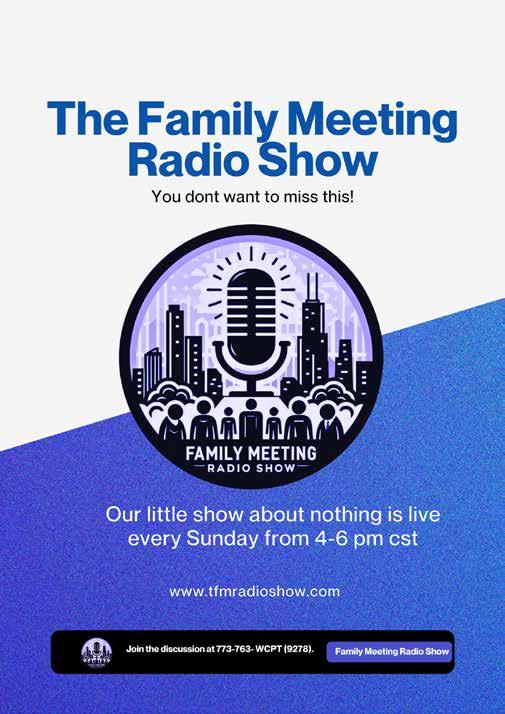
2. Hashtags: A Window Into the Couple’s Journey
Wedding hashtags offer a fascinating glimpse into the couple's journey—far from being merely a trend or tracking tool, these hashtags often carry profound significance. Alexandra Macon, a wedding reporter for the New York Times, notes, “Hashtags are part of the digital scrapbook that couples create for their special day. It’s a way to bring their community together online.”
For instance, my niece’s hashtag, #TheHuntisOver, reflects not just a playful sentiment but also the culmination of her journey through and within love. It signifies the end of a long search for the right partner—a path marked by heartache, growth, and self-discovery. Many attendees may not realize the depth behind such hashtags, as they often create a narrative rich with life experience, resilience, and the nuances of finding true love.
These hashtags serve as a powerful reminder that each couple's story is woven with personal history and shared struggles, turning what might seem like a fleeting social media trend into a celebration of their journey. What hidden stories lie behind the hashtags we encounter at these celebrations?
3. Blending Families—Stressful and Beautiful
The blending of families at weddings introduces a mix of stress and beauty, especially as diverse traditions and personalities collide. These emotionally charged events can be joyous yet fraught with complications, as parents, step-siblings, and extended family members often come together for the first time. This complexity was palpable at the ceremonies I attended, reminding us of the challenges and tri-
umphs that come with uniting families. But all in all, it’s beautiful to even do our best to try.
4. Timing is Everything
Timing shapes the wedding experience, influencing everything from when to get married to the significance of the chosen date. Historian Stephanie Coontz, author of "Marriage, A History," explains that, in the past, couples often married to meet social expectations. Today, “people marry for love, and they marry when they feel it’s the right time for them.”
This modern flexibility was evident in the weddings I attended, where couples forged their own paths—some marrying after years of dating, others in mere months.
5. Weddings—A Modern, Expensive Affair
Weddings have evolved from modest ceremonies to extravagant celebrations, often accompanied by hefty price tags. This trend emerged post-World War II, as Vicki Howard discusses in the book "Brides, Inc.," where the economic boom transformed weddings into lavish events. The average cost today hovers around $30,000. Despite this, many couples are finding unique ways to celebrate, opting for smaller, more intimate gatherings or personalized details. As we witness this evolution, how can we redefine what a wedding means to us?
As I reflect on these experiences, I find myself pondering how the next generation will approach marriage. Will they cling to tradition, or will they continue to reshape it to fit their narratives? In navigating these questions, we might discover our own answers about love and commitment in a rapidly changing world.
Zada Johnson, Ph.D. Staff Writer

Hyde Park’s Harper Theater is wrapping up its special limited release this week of "King of Kings: Chasing Edward Jones," the captivating documentary about the little-known Bronzeville racketeer who made millions from the policy lottery and invested much of it back into Chicago's African-American community.
In the documentary, filmmaker and granddaughter of Edward Jones, Harriet Marin Jones, sets out to learn more about her grandfather’s mysterious past. Growing up overseas, Marin knew little about her grandfather’s life in Chicago. Aside from her mother’s stories about him as a loving father figure, there was
no mention of his life as a policy lottery racketeer and millionaire philanthropist of Bronzeville. When she connects with Chicago author Nathan Thompson, who wrote the landmark "Kings: The True Story of Chicago’s Policy Kings and Numbers Racketeers," she soon learns of her family’s critical connection to Bronzeville’s history.
As she travels with Thompson to historic locations throughout the city, Marin Jones discovers the world of policy, the illegal lottery (also known as “the numbers”) that operated in the back rooms of Bronzeville businesses, generating up to $60,000 a day during its heyday. Jones and his brothers initially worked
Art & culture
KING OF KINGS Documentary Presents the Untold Story of Bronzeville’s Numbers Game
for the pioneering policy kingpins who brought the illicit lottery from the South. As they became more successful, the Jones brothers ran their own policy wheel in the back of their tailor shop on 43rd and Indiana. Years later, Jones became the leader of Chicago’s policy syndicate.
As the film reveals, the policy king story is not just a history of an economically lucrative gambling enterprise; it was also a major vehicle of political and socio-economic advancement in Bronzeville.
The political influence of Jones (who was also a precinct captain) helped to shift Chicago’s African-American votes from Republican to Democratic in the 1932 elections.
While Bronzeville was developing into a thriving African-American community during the Great Migration era, much of its economic foundation was built from the widely circulating revenue of policy.
The documentary also explores the vast array of Bronzeville institutions that Jones and his brothers contributed to, including Provident Hospital (Bronzeville’s African-American hospital), the Chicago Defender’s Bud Billiken parade, and the founding of the first African-American-owned department store named the Jones Brothers Ben Franklin Store (now Gallery Guichard,
located on 47th Street). Jones and his brothers also helped to finance the career of boxing legend Joe Louis and contributed to John H. Johnson’s founding of Ebony magazine. During the time he moved his family to Paris to escape the Italian mafia, Jones helped to finance Josephine Baker’s 1951 tour of the United States.
Marin Jones’s journey to learn more about her grandfather ultimately reveals the complex layers of policy in Bronzeville through a fascinating collection of interviews with family members and local icons, including beloved Chicago historian Timuel Black and Chicago Defender family descendent/photojournalist Bobby Sengstacke, as well as interviews with legendary music producer Quincy Jones, whose father worked for the Jones brothers in the 1940s. The film is also a captivating testament to the larger Afro-Diasporic presence that emanates from the policy king’s story. After the Italian Mafia violently muscled in on Black policy operators, the Jones brothers were forced to relocate abroad, first to Paris and then to Mexico. Interviews with family members reveal French- and Spanish-speaking descendants of the Jones brothers who now live around the world.
With its compelling storytelling and deep dive into Bronzeville community history, "King of Kings: Chasing Edward Jones" is a must-see for Bronzeville enthusiasts and African-American history buffs alike. The documentary runs through Thursday, September 26th, at Harper Theater. For ticket information, visit acxcinemas.com/movie-theater/ harpertheater.
By CNW Staff Report
Celebrating Mentors: Chicago’s 2024 Brother Mike Awards

Chicago is a city known for its rich history, diverse communities, and the dedicated people who help shape its future. Among those unsung heroes are the mentors—individuals who quietly and powerfully impact the lives of young people across the city. This year’s Brother Mike Awards, held on September 17, 2024, at Second City’s Up Comedy Club, honored three such mentors, each dedicated themselves to nurturing the next generation of Chicagoans. Named after the late Brother Mike

Hawkins, a beloved mentor and activist, the awards were created in 2019 to recognize exemplary out-of-school-time (OST) mentors who are often overlooked, despite their critical role in shaping Chicago's youth. Presented by the Chicago Learning Exchange (CLX), this year's event marked the fifth anniversary of the awards, with more nominations than ever before.
The Legacy of Brother Mike
Brother Mike Hawkins was a pillar in Chicago’s youth development commu-


nity. As a poet, activist, and mentor, he was instrumental in creating innovative teen spaces such as YOUmedia at Harold Washington Library and MetaMedia in Evanston. His impact can be seen in the lives of his mentees, including Chance the Rapper and Vic Mensa, both credit Brother Mike for guiding them as artists and young men.
Jamila Woods, a Chicago native and singer-songwriter, paid tribute to Brother Mike during the awards ceremony, reminding the sold-out crowd that “mentorship is a sacred act, and Brother Mike was one of the greatest to ever do it.” Her words resonated deeply, as did her performance, blending her soulful sound with heartfelt reflections on how mentors continue to uplift Chicago’s youth.
Honoring Chicago’s Mentors
Three exemplary mentors were honored at this year’s Brother Mike Awards, each receiving a $5,000 no-strings-attached cash award. The winners were chosen from a competitive pool of 43 nominees, a testament to the deep commitment of Chicago’s youth development workforce.
- Ronnie Taylor Jr., Youth Culture Coordinator at the Center on Halsted, took home the Emerging Mentor Award. In an emotional speech, Taylor shared, “One of the things that fuels me is that I wanted to be the mentor and person that I needed when I was younger.” His win highlights the significance of creating safe, affirming spaces for LGBTQ+ youth in Chicago.
- Jeffrey Shelby, Senior Director at New Life Covenant Church Southeast, received the *CLX Member Award* for his leadership in mentoring through faith-based initiatives. His work ensures that Chicago’s young people have strong role models who guide them spiritually and emotionally.
- Marisol "Pinqy Ring" Vélez, a hiphop artist and activist, was awarded the *Brother Mike Award* for her work
with the John Walt Foundation, where she is known as a "Community Alchemist." Vélez uses her platform to inspire youth through music, social activism, and mentorship, following in the footsteps of Brother Mike himself.
Each of these mentors, though different in their methods and communities, embodies the core belief that mentorship is more than guidance—it is a powerful act of love and transformation.
A Growing Need for Support
While the Brother Mike Awards offer recognition and financial support to these outstanding mentors, they also highlight the growing need for more resources for Chicago’s youth development programs. Chicago Learning Exchange (CLX), which organizes the awards, is a nonprofit organization that supports over 200 local organizations dedicated to reshaping learning through technology, creativity, and community engagement. Through partnerships with organizations like SocialWorks, Digital Youth Network, and Chicago Public Libraries, CLX continues to foster opportunities for young people across the city. The Brother Mike Awards serve as a reminder that mentors are essential in this effort, working behind the scenes in spaces like libraries, art studios, and boxing gyms.
Looking to the Future
As Chicago continues to grow and evolve, the role of mentors will only become more vital. This year’s Brother Mike Awards not only celebrated the individual achievements of the winners but also reinforced the importance of supporting the city’s youth development workforce. As we reflect on the legacies of mentors like Brother Mike, it’s clear that their impact extends far beyond the young people they work with—it shapes the future of Chicago itself.
For more information on the Brother Mike Awards and the work of the Chicago Learning Exchange, visit [www.chicagolx.org](http://www.chicagolx.org).
Ronnie Taylor Jr., Emerging Mentor winner “Dilla” Thomas, Brother Mike Awards host
Youth performer Olivia Roach (Age16)
Mila K. Marshall, PhD
Chicago NRML Celebrates Seven Years of Cannabis Advocacy in Style
CannabisI
n a vibrant celebration of progress and advocacy, the Chicago chapter of the National Organization for the Reform of Marijuana Laws (NORML) recently marked its seventh anniversary, highlighting the organization’s ongoing commitment to cannabis reform, education, and equity. The event took place at the Penthouse Hyde Park and brought together advocates, physicians, policymakers, and community members, all dedicated to ushering in a new era of cannabis legality and conscious consumption.
Edie Moore, the first president and founder of the Chicago chapter, has been instrumental in shaping the Illinois cannabis landscape. Her influence and passion for advocacy have fueled the organization’s growth and sustained presence, particularly for medical cannabis patients.
“I know personally that Chicago NORML’s mission has been about more than just cannabis; it’s about justice, equity, and advocating against policies that have caused harm,” she remarked. "Look around," she added, "Does this look like a traditional consumption event?"
Normalizing cannabis consumption is a key part of Chicago NORML’s agenda. Moore, who has since transitioned into the role of legislative director at Chicago NORML, believes that as stigma around cannabis diminishes, the industry will become more equitable, allowing more people access to its benefits. The organization remains committed to prioritizing medical patients and ensuring that legislation and education for medical practitioners are front and center.
In her remarks, Moore emphasized the importance of closely monitoring how intoxicants will be addressed in the U.S. Farm Bill, collaborating with Illinois State Representative Bob Morgan (58th), and continuing to advocate for meaningful changes at the state level. Additionally, she called for the development of sustainable pathways for social equity businesses to become fully operational.
At the city level, Chicago NORML is ambitious, aiming to work with the Johnson administration to establish the city’s first-ever working group about cannabis. "There is $12 million from cannabis taxes sitting in the general fund. We want a working group to redirect cannabis tax funds to support public education and outreach,” Moore told the audience.
Chicago’s Tax Increment Financing (TIF) is a financial tool to stimulate economic de-
velopment in the city. In 2019, 28% of TIF funding was directed toward “economic development,” yet Moore pointed out that cannabis businesses are not allowed access to these funds. In 2019, former Mayor Lori Lightfoot proposed that Chicago grow its own cannabis and become part of the economy to help people learn the business. While Governor J.B. Pritzker celebrated this bold vision, little has been done under the Johnson administration to further develop the cannabis industry or allocate cannabis tax dollars for its growth.
As Illinois celebrates over four years of legalized recreational cannabis, the chapter took


and work directly with patients—medical practitioners.
“With our medical series, we want to educate our doctors, many of whom have not yet engaged with cannabis and patient care,” said Felicia Santiago, deputy director of Chicago NORML. “Our work has resulted in the addition of four women’s health conditions to the list of eligible conditions, including PCOS, endometriosis, and uterine fibroids. We know evidence-based medicine lacks comprehensive cannabis research, and your support helps drive our vital work for patients across Illinois,” Santiago said, as the crowd applauded.

the opportunity to reflect on its accomplishments and look ahead to the challenges still facing the community.
“We’re proud of what we’ve achieved together over these past seven years,” saidArianne Richards, executive director of Chicago NORML. “There are so many people here I’ve never met or seen before. For me, this reflects the significant reach we’ve had over the years, reaching people from different communities and walks of life to support this work,” Richards added.
The celebration and fundraiser help support lobbying efforts in Springfield, Illinois, and related outreach. Exciting developments include the evolution of the medical series and cannabis education for those who prescribe
As the event concluded, Kenny Mason, a prominent cannabis accountant, urged attendees to remain vigilant in their advocacy and encouraged them to celebrate and donate. The event’s consumption experience was tastefully curated by High Minded Events. Guests were invited to enjoy selecting premium flower at the pre-roll bar, where rollers dressed in all black explained the terpene profiles and THC levels of different cannabis strains. For those wanting a smoke-free experience, some edible cannabis products were available. The rooftop patio was also open for onsite consumption, providing a warm setting for guests to enjoy the early September weekend.
Food & Wine
Savannah Moses Staff Writer
Caramel Spice, Caramel Nice Homemade Caramel Apple Spice
Fall is here, whether we like it or not. Summertime Chi is making its very abrupt departure, but unlike those new to the city, we know that even when the temperatures drop, the drinks don’t have to. As the crisp air rolls in and the leaves start to fall, it’s easy to feel a bit nostalgic for warm summer days. But why not embrace the change of seasons with a cozy beverage that captures all the best flavors of fall? We’re here to make sure the long lines at Starbucks don’t slow you down with our favorite sugary drink—Caramel Apple Spice.
This sweet and spicy treat combines the familiar comforts of apple cider with a rich caramel twist, making it the perfect drink to warm you from the inside out. And the best part? You can make it right at home. Whether you’re spending your days raking leaves or gearing up for some pumpkin carving, this homemade recipe is sure to be a hit.
Caramel Apple Spice Recipe
Ingredients:
• 1 ½ cups apple juice or apple cider

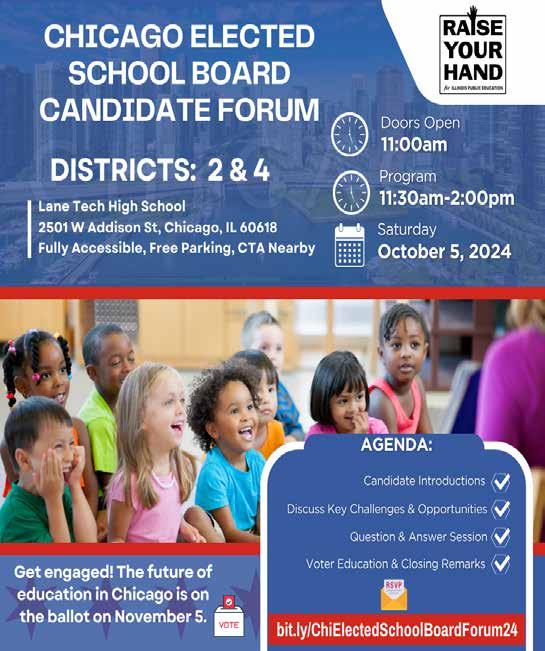
• 1 tablespoon caramel syrup (plus extra for topping)
• ½ teaspoon cinnamon
• 1 tablespoon brown sugar
• ¼ teaspoon vanilla extract
• Whipped cream for garnish
Instructions:
1. In a small saucepan, combine the apple juice, cinnamon, brown sugar, and vanilla extract. Stir over medium heat until the mixture is warm and the sugar has fully dissolved.
2. Once heated, remove from the stove and pour into a mug.
3. Add the caramel syrup and stir well.
4. Top with whipped cream and drizzle with extra caramel syrup.
5. Enjoy your homemade Caramel Apple Spice while embracing the crisp fall air!
Why We Love It
This drink is the perfect way to bring the essence of fall into your kitchen. The sweet apple flavor blends beautifully with the warming spices, and the caramel adds a layer of indulgence that will satisfy any sweet tooth. Plus, it’s easy to make and customizable—you can adjust the sweetness or spice to fit your personal taste.
If you’re a fan of Starbucks’ version of this drink, you’ll love how simple it is to recreate at home—without the hassle of waiting in line on chilly mornings. Whether you're curled up with a good book or hosting friends for a cozy fall gathering, this sweet treat will be the perfect companion as you watch the city transform with the changing leaves.
With this delightful Caramel Apple Spice recipe in hand, you can fully embrace the season without leaving the comfort of your home—or waiting in long lines. Whether you're enjoying a peaceful afternoon or sharing a moment with loved ones, this drink will quickly become your go-to as the temperatures drop. Why not make this your new fall tradition?
Laura Miller Managing Editor
Fall-ing for ‘90s Fashion Timeless Trends Making a Comeback

Deep Reds
The resurgence of '90s fashion is in full swing, and fall is the perfect season for its comeback. While the '90s are often remembered for their unkempt, grunge-inspired looks, not all trends from that decade revolved around baggy jeans and flannel shirts. Many textures and styles from the '90s still resonate with today’s fashion enthusiasts. Staples like dark reds, faux leather, and suede are timeless, offering a refined take on a decade that wasn’t all about rebellion.
For some of us, trends like the merlot-colored sweater or a great pair of riding boots never really went away. In fashion, it’s often said, "if you wear a trend long enough, it’ll eventually become popular again." Fall 2024 is the season to embrace these returning styles, and if you missed out on them the first time, here are some key pieces to add to your wardrobe.
Riding Boots
Nothing says fall quite like a pair of sleek riding boots. Versatile and practical, they’re perfect for pairing with everything from skinny jeans to skirts. These boots provide an air of sophistication while keeping your feet warm in the cool autumn breeze.
Corduroy Blazers
Corduroy is another '90s fabric making a major comeback this season. A corduroy blazer can easily transition from a casual daytime look to something more professional. Its rich texture and fall-friendly hues—think browns, olives, and mustard—make it a must-have for layering during the chilly months.
Dark, earthy shades like merlot and burgundy are synonymous with fall fashion. They add depth and elegance to any outfit, whether it’s through a sweater, dress, or coat. These shades are versatile, flattering, and a great way to embrace autumnal tones while keeping your look bold and sophisticated.
Pashminas
No fall wardrobe is complete without a pashmina. This lightweight yet cozy accessory is perfect for layering, adding warmth without sacrificing style. Whether you drape it over your shoulders or wear it as a scarf, the pashmina is a go-to piece that blends functionality with fashion.
Faux Leather and Suede
Faux leather jackets and suede skirts have been enduring fall staples since the '90s. These fabrics offer texture and structure to your outfits, giving you that edgy yet polished look that can effortlessly take you from day to night. Fashion trends always find a way to circle back, and right now, '90s nostalgia is in full swing. By embracing the timeless pieces that defined that era—like riding boots, corduroy blazers, and deep reds—you’ll not only look stylish but also feel connected to a fashion history that continues to influence today’s trends. Shades of the season, from deep burgundy to rich chocolate and classic olive, add the perfect warmth and sophistication to
your wardrobe. So, whether you’re revisiting these staples or discovering them for the first time, fall is the perfect season to make them your own. After all, some trends are worth waiting for.


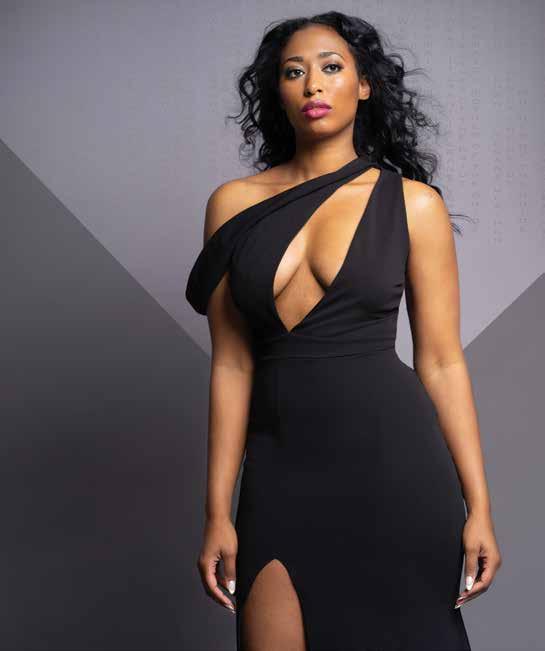


PART-D HERE’S WHAT YOU NEED TO KNOW
In 2025, Medicare Part D enrollees can choose to pay for their medication in monthly payments thanks to provisions Representative Danny Davis (D-IL) and Congress included in the Inflation Reduction Act.
HOW IT WORKS!
OUT OF POCKET LIMIT
1
2
3
4
Out-of-pocket limit: Beginning in 2025, everyone with Medicare Part D will have a $2,000 limit on copays and coinsurance. This means that Medicare Part D enrollees cannot pay more than $2000 out of pocket for their medication.
MONTHLY PAYMENTS
Medicare Part D enrollees can pay for out-of-pocket medication costs in monthly payments in 2025 To enroll, they must contact their health plan during Open Enrollment or at any time in 2025, except December. They can also change their mind and cancel the monthly payment option at any time
EXTRA HELP (LOW-INCOME SUBSIDY) PROGRAM
Medicare Extra Help Program expanded to those with an income of up to 150% of the Federal Poverty Line. Medicare Part D enrollees making less than $22,590 per year or less than $30,660 per year as a couple may qualify. This program lowers premiums and cost-sharing for medications. To see if you qualify, fill out this form.
INSULIN COSTS
All Medicare Part D enrollees qualify to receive a month’s worth of insulin for $35. Everyone using insulin under Medicare Part D automatically qualifies.
Medicare’s Open Enrollment period begins October 15. For more information about these Part D programs, contact your health plan, or visit here.
Now more Medicare Part D enrollees can decide how to pay for their medications because of Representative Danny Davis (D-IL) and Congress. Remember, enrollment for the 2025 Medicare Program begins October 15.


